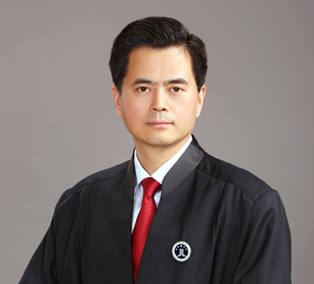Chinese IP Industry Calls to Commercialize IP to Stimulate Innovation
font-size:
Intellectual property industry insiders called for the integration of IP and market demand at a recent forum themed "Open innovation" in Nanning, the capital city of the Guangxi Zhuang autonomous region.
The forum, organized by the China Enterprise Confederation and wtoip.com, a leading Chinese online IP trading and service marketplace, attracted more than 1,200 delegates, including government officials, scholars and executives from companies, IP agencies and associations from China and overseas. It was part of a summit for China's top 500 companies held on Saturday and Sunday.
Li Mingxing, vice-chairman of the China Enterprise Confederation, said in his opening address that open innovation is a requirement for China's sustainable development. He called for collaboration among production, teaching and research sectors and improved IP rights protection and utilization mechanisms to encourage innovation, and suggested that Chinese companies and institutions improve their innovation capacity by seeking major breakthroughs in key fields and technologies.
Xie Xuhui, CEO of wtoip.com, said IP is a resource that needs global deployment.
"Like commodities, intellectual property should be able to flow freely across the world, instead of being left unused, to promote technical advancement among different countries in a coordinated way," Xie said. "It requires many other resources to integrate IP with production, such as experts, equipment, labs and product design, and that entire industry chain makes for the commercialization of IP," he said. "It is a big project."He also suggested that financial and investment institutions always pay attention to IP financing as the sector "will greatly stimulate innovation". "Many companies involved in the IP commercialization and financing businesses will become the creators of China's new economy," he added.
Jayson Pankin, co-founder and president of Detroit-based AutoHarvest Foundation, a nonprofit organization specializing in IP management, used examples to highlight the importance of patent packages. Pankin said that each single patent is not complex, but they become powerful when combined.
AutoHarvest and wtoip.com started a partnership in March to share information and promote IP-related exchanges between companies, investors, engineers and scientists in China and the United States. Thanks to the cooperation, Chinese companies can find the IP resources they need in the US, as well as new opportunities for development by establishing partnerships with their US counterparts, Pankin said.
The State Intellectual Property Office signed an agreement with the government of Guangxi last month to help it improve its IP capacities.
"Guangxi has been attempting the integration of intellectual property and its regional economy," said Xie Naitang, head of the Guangxi administration for science and technology. "IP is emerging as a pillar to support industrial development."Guangxi introduced and industrialized 26 invention patents from outside the autonomous region in 2014, leading to total output value of nearly 800 million yuan ($125 million) thus far.
The forum, organized by the China Enterprise Confederation and wtoip.com, a leading Chinese online IP trading and service marketplace, attracted more than 1,200 delegates, including government officials, scholars and executives from companies, IP agencies and associations from China and overseas. It was part of a summit for China's top 500 companies held on Saturday and Sunday.
Li Mingxing, vice-chairman of the China Enterprise Confederation, said in his opening address that open innovation is a requirement for China's sustainable development. He called for collaboration among production, teaching and research sectors and improved IP rights protection and utilization mechanisms to encourage innovation, and suggested that Chinese companies and institutions improve their innovation capacity by seeking major breakthroughs in key fields and technologies.
Xie Xuhui, CEO of wtoip.com, said IP is a resource that needs global deployment.
"Like commodities, intellectual property should be able to flow freely across the world, instead of being left unused, to promote technical advancement among different countries in a coordinated way," Xie said. "It requires many other resources to integrate IP with production, such as experts, equipment, labs and product design, and that entire industry chain makes for the commercialization of IP," he said. "It is a big project."He also suggested that financial and investment institutions always pay attention to IP financing as the sector "will greatly stimulate innovation". "Many companies involved in the IP commercialization and financing businesses will become the creators of China's new economy," he added.
Jayson Pankin, co-founder and president of Detroit-based AutoHarvest Foundation, a nonprofit organization specializing in IP management, used examples to highlight the importance of patent packages. Pankin said that each single patent is not complex, but they become powerful when combined.
AutoHarvest and wtoip.com started a partnership in March to share information and promote IP-related exchanges between companies, investors, engineers and scientists in China and the United States. Thanks to the cooperation, Chinese companies can find the IP resources they need in the US, as well as new opportunities for development by establishing partnerships with their US counterparts, Pankin said.
The State Intellectual Property Office signed an agreement with the government of Guangxi last month to help it improve its IP capacities.
"Guangxi has been attempting the integration of intellectual property and its regional economy," said Xie Naitang, head of the Guangxi administration for science and technology. "IP is emerging as a pillar to support industrial development."Guangxi introduced and industrialized 26 invention patents from outside the autonomous region in 2014, leading to total output value of nearly 800 million yuan ($125 million) thus far.
Related articles
This article has no related articles!






